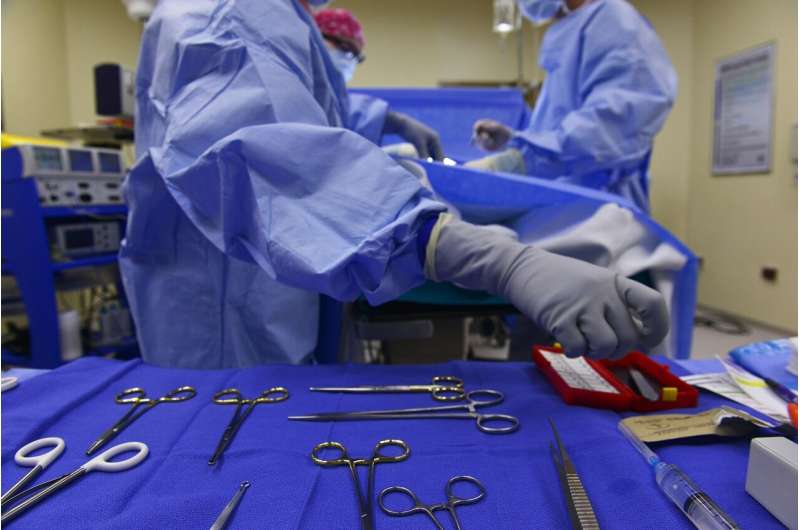Spine surgeons outline how to prioritize procedures amid pandemic

As the COVID-19 pandemic took hold, hospitals across the country canceled elective procedures in an effort to flatten the transmission curve and prioritize personal protective equipment for frontline health care workers. Among those procedures were pediatric spine surgeries for patients with conditions like scoliosis and thoracic insufficiency syndrome.
Now, as hospitals resume elective procedures, including pediatric spine surgeries, surgeons from Children's Hospital of Philadelphia (CHOP) have outlined a framework for prioritizing pediatric spine surgeries amid the pandemic. The recommendations were published recently in the Journal of Bone and Joint Surgery.
"We've provided a framework for a reorientation of the thought process by which surgeons should plan pediatric spine surgery in the midst of this pandemic," said Jason B. Anari, MD, a pediatric orthopaedic surgeon with CHOP's Division of Orthopaedics and first author of the recommendations. "Although many families historically pick surgical dates that are based on school, sport seasons, or vacation schedules, we support the creation of a new urgency list to help guide rescheduling while also minimizing potential risk to patients."
The paper proposes classifying surgeries into four categories:
- Class 1: Emergency surgeries that must happen right away;
- Class 2: Urgent surgeries that must happen within a short timeframe;
- Class 3: Semi-urgent surgeries in which a delay of several months would result in less-optimal clinical outcomes;
- and Class 4: Elective surgeries that might require a prolonged stay in the intensive care unit, that will require more intensive use of health-care resources, or that involve children with competing risks of medical conditions, or cases for which the outcome will be no different if delayed up to 6 months.
The authors suggest that the classes of surgeries should occur in descending order on the epidemiological curve, with Class-1 emergency surgeries happening as soon as possible regardless of case counts, using preoperative COVID-19 screening and sufficient personal protective equipment, and the other classes happening as community case counts flatten and then decrease. Class-4 surgeries, the authors recommend, should occur once the pandemic has reached its low point.
The authors also advise health care systems and surgeons to develop strong partnerships to facilitate rescheduling patients whose surgeries had been postponed due to the pandemic. Scheduling patients beyond standard hours or on weekends, as CHOP has supported, and finding other ways to reschedule patients could potentially help decrease waiting times, which in turn could also minimize an uptick in surgeries that became more complex due to postponement. Additionally, finding alternate times for procedures helps families to social distance while in the hospital and improve overall access to care for patients.
"The pandemic has been understandably anxiety-provoking for patients in need of spine surgery and their families," Anari said. "Having a plan of action to ramp up in a safe and organized fashion benefits everyone: the health system, surgeons, care teams, and, most importantly, patients."




















